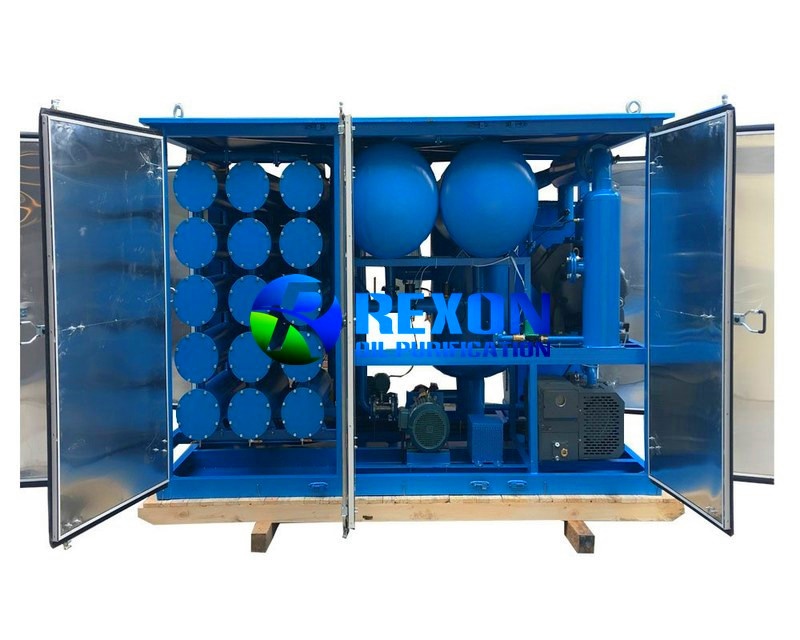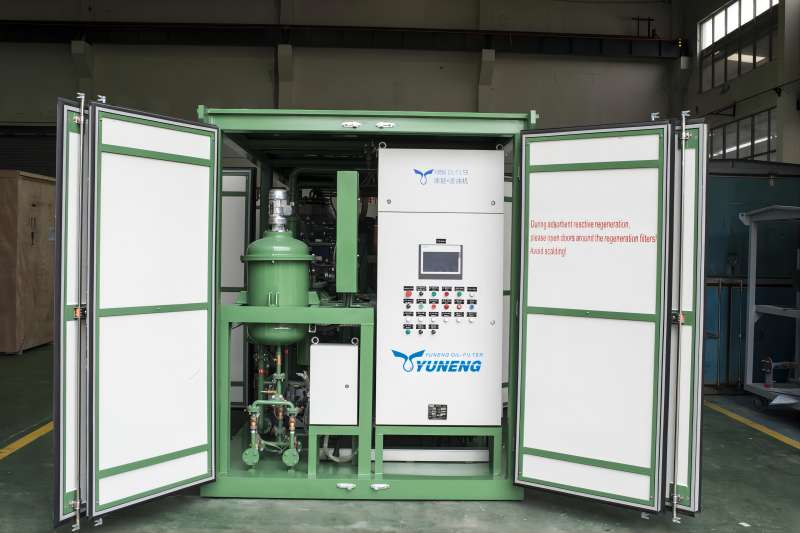What Makes Transformer Oil Regeneration a Sector Must-Have
Wiki Article
Exactly How Regenerated Transformer Oil Extends Transformer Lifespan
The function of transformer oil is critical in ensuring the reliability and longevity of transformers, serving as both an insulator and coolant. Restored transformer oil uses an engaging option to boost these functions by properly removing harmful contaminations that endanger performance.Importance of Transformer Oil
Transformer oil plays a critical duty in the effective operation of electric transformers. It mainly works as a shielding medium, stopping electric discharges and guaranteeing that parts operate safely under high voltage problems. The oil's dielectric properties are essential to preserving the honesty of the transformer, as they decrease the risk of failures that can bring about pricey downtimes or catastrophic cases.Along with its shielding capabilities, transformer oil additionally works as a coolant. As transformers run, they generate warmth that should be dissipated to protect against overheating and succeeding damage. The oil distributes within the transformer, transferring and soaking up warmth far from vital elements, therefore keeping ideal operating temperatures.
Furthermore, transformer oil functions as a barrier against dampness and impurities, which can endanger the efficiency and durability of the transformer. Its chemical properties help in reducing the effects of acids and various other byproducts that may create with time, adding to the general wellness of the electric system.
Benefits of Regenerated Oil

In addition, regenerated transformer oil has a lower degree of contaminations, including particles and contaminants that can degrade efficiency. This purity not only enhances the oil's thermal conductivity however also expands the functional lifespan of transformers by reducing overheating dangers. The improved thermal security of restored oil guarantees regular performance even under high operating temperature levels, which is crucial for keeping transformer performance.
Another advantage is its ecological effect. Regrowed oil promotes sustainability by lowering waste and the need for brand-new oil production, thereby reducing the carbon footprint connected with transformer upkeep. Reclaimed Transformer Oil. The longevity of regenerated oil translates to reduced maintenance costs over time, as fewer oil changes and less constant equipment downtime are required.
Process of Oil Regeneration
The regeneration of transformer oil includes an organized process designed to restore the oil's initial buildings and enhance its performance. This process generally starts with the removal of the made use of oil from the transformer, which is then subjected to various purification methods.The initial action in the regeneration process is the purification, where solid impurities such as dirt, steel, and sludge particles are eliminated. This is often adhered to by vacuum cleaner purification, which helps to remove moisture and unpredictable compounds, consequently enhancing the oil's dielectric toughness.

Effect On Transformer Efficiency
Restoring the homes of regenerated transformer oil significantly influences the overall efficiency of transformers. Improved dielectric strength is among the most vital benefits, as it permits better insulation and decreases the probability of electric failure. This improvement leads to an extra steady procedure under high voltage conditions, inevitably leading to boosted efficiency.In addition, the removal of pollutants and deterioration items throughout the regeneration procedure minimizes the threat of overheating. Cleaner oil facilitates better warmth dissipation, which is essential for maintaining optimal operating temperature levels. Therefore, the thermal efficiency his comment is here of the transformer is enhanced, enabling greater loads without compromising reliability.
Furthermore, the chemical stability of restored oil makes certain extended operational life. It withstands oxidation and deterioration, reducing the frequency of upkeep treatments and oil substitute. This security not only adds to enhanced performance yet additionally lines up with sustainability objectives by reducing waste.
Future of Transformer Upkeep
As improvements in modern technology continue to improve the landscape of electric design, the future of transformer upkeep is poised for significant improvement. The integration of wise modern technologies, such as IoT sensing units and predictive analytics, allows real-time surveillance of transformer health, improving the capacity to preemptively deal with issues prior to they intensify into significant failings. This positive technique not just takes full advantage of operational efficiency however likewise prolongs the life expectancy of transformers.Furthermore, the application of expert system (AI) in data evaluation enables more precise mistake discovery and diagnosis. By leveraging machine discovering formulas, maintenance teams can determine patterns in functional information that human experts might forget, resulting in even more educated decision-making.
Furthermore, the fostering of green practices, consisting of making use of regenerated transformer oil, is readied to redefine maintenance protocols. This lasting strategy not just lessens environmental impact however additionally boosts the his response total health of the transformer.
Lastly, the shift in the direction of automation in upkeep procedures is expected to simplify procedures, decrease visit this website downtime, and reduced expenses. As these developments continue to progress, the future of transformer upkeep will definitely end up being much more efficient, trustworthy, and lasting, guaranteeing the honesty of essential electric infrastructure.
Conclusion
The application of regenerated transformer oil considerably improves the functional longevity of transformers. By successfully recovering dielectric stamina and thermal stability, this oil plays an important function in mitigating dangers connected with overheating and oxidation. The regrowth procedure not just eliminates damaging impurities however also decreases upkeep frequency and oil replacement costs. Eventually, the adoption of regenerated oil represents a critical improvement in transformer upkeep, guaranteeing optimum performance and sustainability in the monitoring of electric infrastructure.The duty of transformer oil is crucial in making sure the dependability and long life of transformers, serving as both an insulator and coolant.Transformer oil plays an essential duty in the reliable operation of electrical transformers. Regrowed oil advertises sustainability by lowering waste and the demand for new oil manufacturing, thus lowering the carbon impact connected with transformer maintenance.Recovering the properties of regenerated transformer oil dramatically influences the overall efficiency of transformers.The use of regenerated transformer oil considerably boosts the operational longevity of transformers.
Report this wiki page